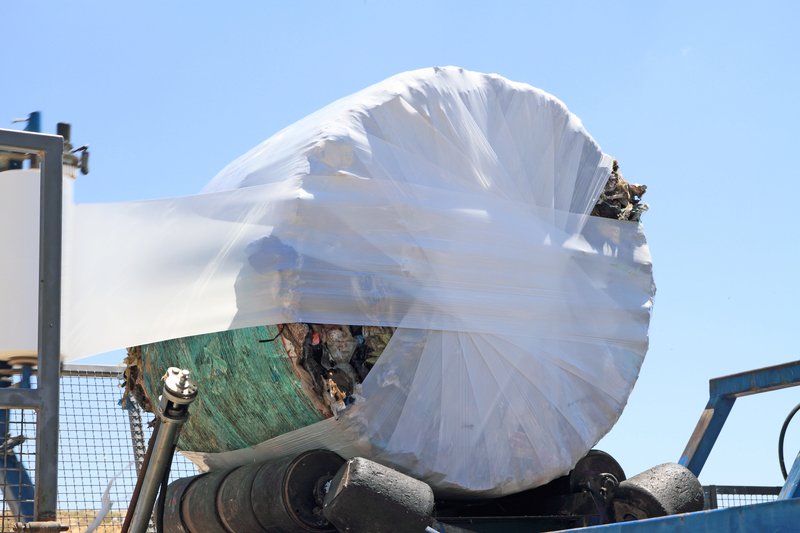Decoding the Builders Skip for You: The Ultimate Guide
Are you embarking on a home renovation, landscaping project, or major construction work? If so, you have probably come across the term builders skip. But what exactly is a builders skip? How does it differ from other skip sizes? And how can you get the most value from your skip hire? In this comprehensive article, we'll decode the builders skip in detail, covering its uses, benefits, regulations, and tips for effective waste management. Everything you need to know about builders skips is right here.
What Is a Builders Skip?
A builders skip is one of the most popular types of skips available for both residential and commercial use in the UK and many other countries. Typically, when people refer to a 'builders skip', they mean a skip with a size capacity of either 6 or 8 cubic yards (about 4.6m3 to 6.1m3). These skips are versatile and large enough to handle significant volumes of waste without being too bulky for standard driveways or building sites.
Key Builders Skip Specifications
- Size: Usually 6 or 8 cubic yards
- Dimensions: 6 yard skip (approx. 10ft x 5ft x 4ft), 8 yard skip (approx. 12ft x 6ft x 4.5ft)
- Typical Capacity: 60-80 bin bags of waste
- Common Uses: Construction debris, renovation waste, bulky household items
- Access: Usually with a drop-down door for wheelbarrow access
The builders skip is often recognised as the standard size skip for construction projects, from home extensions to medium-sized commercial jobs. Its versatility makes it a favourite among both DIY enthusiasts and professional builders.
Why Choose a Builders Skip?
Choosing the right skip is crucial for effective waste management during any project. There are several reasons why a builders skip might be the perfect choice for your needs:
- Ideal Size for Projects: Not too small and not too large. It hits the sweet spot for most renovation and building works.
- Cost-Effective: Hiring a larger skip than required means paying for wasted space, while a builders skip gives just the right amount.
- Convenient Placement: Fits comfortably on most residential driveways and building plots.
- Versatile Usage: Suitable for a diverse range of waste materials, from bricks and rubble to furniture and garden waste.
Unlike mini skips (2-4 yards) which fill up quickly and may require multiple collections, or the maxi skips (10-16 yards) which can be unwieldy and often overkill, the builders skip provides a practical solution for most building and renovation needs.
What Can You Put in a Builders Skip?
The range of materials you can dispose of in a builders skip is broad, but it's essential to be aware of both what can and cannot go into your skip. Here's a helpful breakdown:
- Allowed waste: Soil, hardcore, tiles, concrete, bricks, plaster, old furniture, wood, metals, plastics, and garden waste.
- Not permitted: Hazardous materials like asbestos, electrical appliances, paint, tyres, gas cylinders, medical waste, solvents, batteries, chemicals. These require special disposal.
Always check with your skip hire provider for a full list of restricted items before loading your builders skip. Incorrect disposal could result in fines or additional charges.

Understanding Skip Sizes: Where Does the Builders Skip Fit In?
Skip sizes can be confusing, with various terms tossed around in the industry. Here's a quick overview:
- Mini Skips (2-4 yards): Small clear-outs or minor gardening jobs.
- Builders Skips (6-8 yards): Medium-scale clearances, extensions, kitchen or bathroom refits, and standard building projects.
- Maxi Skips (10-16 yards): Larger commercial jobs, house clearance, bulky items (note: not always suitable for heavy materials like concrete or soil due to weight limits).
The builders skip is the industry workhorse--not as small as a mini skip, but much more manoeuvrable than the maxi skip. Its dimensions make it the sensible choice for most jobs.
When Should You Use a Builders Skip?
Deciding when to hire a builders skip depends on the scale and type of your project. Here are some scenarios when a builders skip is the best solution:
- Home Renovations: For kitchen, bathroom, or whole-home refurbishments.
- Garden Landscaping: When removing soil, turf, decking, or old patios.
- Construction Sites: For bricks, rubble, concrete, and general construction waste.
- Roofing Works: Disposing of old tiles, slates, wood, and felt.
- Medium House Clearance: Perfect for disposing of old furniture, carpets, and clutter.
If you expect to generate between 60-80 bin bags worth of waste, a builders skip is likely the right match for you.
How to Hire a Builders Skip
The process of hiring a builders skip is straightforward, but there are several important factors to consider for a smooth and legal experience:
Find a Trusted Skip Hire Provider
- Look for a licensed waste carrier with good reviews.
- Check what's included: delivery, pick-up, hire duration, permits.
Obtain Necessary Permits
- Private land: No permit generally needed (e.g., placing on your driveway).
- Public highway: You will need a council permit if the skip is on a road or pavement. Most skip firms can arrange this for you.
Plan Your Skip Delivery and Collection
- Ensure there's sufficient access for delivery lorry (check width and height restrictions).
- Set a hire period: Most standard hires are for 7-14 days, but extensions are usually available.
- Consider skip placement for easy loading and minimal disruption.
Maximising Your Builders Skip: Tips and Best Practices
To get the best value and ensure a hassle-free experience when using your builders skip, follow these expert tips:
- Break Down Bulky Items: Dismantle furniture, squash boxes, and break up large items to fit more in the skip.
- Load Evenly: Start with heavy or flat materials at the bottom, filling gaps with smaller items. Don't overload past the fill line.
- Avoid Prohibited Items: Double-check your waste to avoid restricted or hazardous materials.
- Consider Recycling First: Set aside reusable or recyclable materials, such as clean timber or metals.
Overloading a skip is both illegal and unsafe--skips should not have items sticking out above the sides. Most skip lorries will refuse to collect overloaded skips.
Builders Skip Regulations and Environmental Responsibility
Using a skip brings with it a responsibility to dispose of rubbish in an environmentally friendly manner:
- Licensed Contractors: Always use a skip hire company registered with the Environment Agency.
- Waste Tracking: Reputable providers offer waste transfer notes, ensuring your rubbish is disposed of correctly.
- Recycling Commitment: Many leading skip hire firms recycle 80-95% of collected builders skip waste, minimising landfill impact.
It is your duty of care to ensure your waste is handled responsibly, so choose your provider wisely. Illegal fly-tipping can result in heavy fines or prosecution.
Frequently Asked Questions About Builders Skips
How much does a builders skip cost?
The price of hiring a builders skip depends on location, size (6 or 8 yards), hire duration, and whether a permit is required. As a rough guide, expect to pay between ?200-?350, with some variation according to region and time of year.
Can I put a skip on the road outside my house?
Yes, but a skip permit from the local council is mandatory, which often costs between ?20 and ?65 per week. Many skip hire firms can organise this for you.
What happens to my waste after collection?
Waste from builders skips is taken to a licensed facility, where it is sorted, with as much as possible diverted for recycling. Non-recyclable materials are sent to landfill.
How quickly can I get a builders skip delivered?
Many companies offer next-day delivery, but booking ahead is always advised, especially during busy renovation periods.
Can I mix types of household waste and building debris in my builders skip?
Generally, yes, except for hazardous items. Always consult your skip hire company for specific rules, as certain jobs (e.g., only soil, or only plasterboard) may require separate skips.
Alternatives to the Builders Skip: Is There a Better Option?
While the builders skip is the go-to solution for many projects, sometimes another waste management method may be better suited to your needs:
- Wait and Load Service: Great for sites with restricted Lorry access or no parking space.
- Grab Hire: Suitable for loose soil and hardcore waste collected over fences or from piles.
- Mini or Midi Skips: Cost-saving for tiny jobs.
- Man & Van Rubbish Clearance: Ideal for furniture or general junk disposal without the need for a skip permit.
However, for most medium-size projects, the classic builders skip remains the best value-for-money and convenience.

Conclusion: The Builders Skip--Your Waste Management Ally
In summary, decoding the builders skip is all about matching your project's needs with the right skip size, ensuring compliance with local regulations, and making environmentally responsible choices. With its optimal size, cost-effectiveness, and versatility, the builders skip continues to be the smart choice for thousands of building and renovation projects every year.
Before hiring, always consult reputable skip hire providers, ask about hidden charges, check for licensing, and be clear about what you can and can't put in your skip. By following these steps, you'll enjoy a smooth, stress-free waste disposal experience and get the most value from your builders skip.
Whether you're a builder, a homeowner, or a project manager, understanding the ins and outs of the builders skip gives you greater control over your budget, time, and environmental impact. Make your next project a success by choosing the right builders skip for your needs.
Ready to Book Your Builders Skip?
If you've assessed your requirements and decided a builders skip is right for you, it's time to compare skip hire services in your area. Look for companies that stress environmental responsibility, provide transparent pricing, and deliver outstanding customer service. Your site, your street, and the environment will thank you for it!